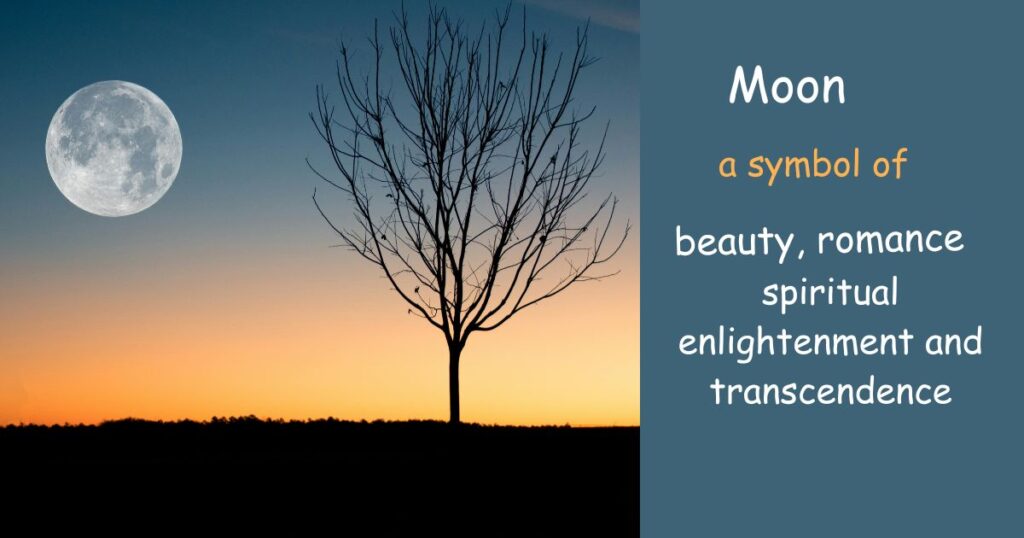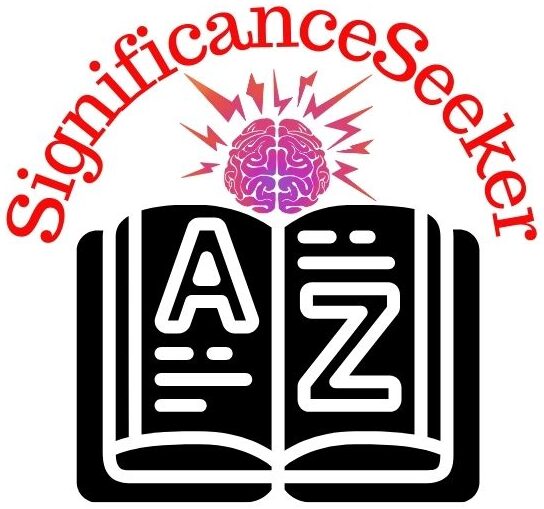Introduction
Celestial bodies have captivated human imagination since ancient times, serving as symbols of power, divinity, and cosmic order. Among these celestial entities, none hold as much significance as the sun and moon. Across cultures and civilizations, the sun and moon have been revered as celestial deities, guiding forces, and symbols of cyclical renewal. From the sun’s life-giving warmth and illumination to the moon’s mysterious allure and rhythmic phases, these luminaries have played pivotal roles in shaping human beliefs, rituals, and mythologies.
In this article, we’ll explore a wide range of meanings and symbolisms associated with the sun and moon across various cultures around the world. The radiant glow of the sun and the soft, silvery light of the moon offer a variety of meanings and symbolism.
Symbolism and Meaning of the Sun

Since ancient times, the sun has been revered as a deity in numerous civilizations, such as Egypt, Mesopotamia, and Mesoamerica. Its life-giving properties and cyclical movements influenced agricultural practices, calendars, and religious ceremonies.
Across various religious traditions, the sun symbolizes divine power, enlightenment, and the source of all creation. In Hinduism, the sun god Surya represents the supreme cosmic force, while in Christianity, the sun is often associated with the glory of God and the resurrection of Christ.
i. Interpretation of Light and Warmth
As the ultimate source of light and warmth, the sun is often interpreted as a symbol of vitality, energy, and enlightenment. Its radiant rays illuminate the world, dispelling darkness and bringing life to all living beings, symbolizing hope, optimism, and renewal.
ii. Astrological Significance
In astrology, the sun represents the essence of an individual’s personality, ego, and sense of self. It governs the zodiac sign of Leo and influences traits such as vitality, creativity, and self-expression, shaping one’s identity and life path.
iii. Cultural Representations
Throughout history, the sun has been depicted in various art forms, from ancient petroglyphs to modern paintings and sculptures. Its symbolic significance is evident in architectural designs, religious iconography, and national emblems, reflecting cultural beliefs and values across different civilizations.
iv. Sun Symbolism in Modern Culture
In contemporary society, the sun continues to hold symbolic significance, representing concepts such as power, enlightenment, and vitality. From corporate logos to literary motifs, the sun’s image remains a ubiquitous symbol of strength, warmth, and optimism in the human psyche.
Symbolism and Meaning of the Moon

The moon has been a central figure in mythologies and cultural narratives across the globe, often depicted as a divine entity or celestial being. In ancient cultures such as those of the Sumerians, Egyptians, and Greeks, the moon was associated with various deities and goddesses, embodying qualities of femininity, mystery, and magic.
i. Lunar Symbolism in Religious Traditions:
In many religious traditions, the moon symbolizes cycles of birth, death, and rebirth, as well as spiritual enlightenment and transcendence. In Islam, the lunar calendar determines the timing of religious observances, while in Buddhism, the full moon holds special significance as a time for meditation and reflection.
ii. Interpretation of Mystery and Intuition:
The moon’s ever-changing phases and enigmatic nature have inspired interpretations of mystery, intuition, and the subconscious mind. It is often seen as a symbol of the hidden realms of the psyche, representing dreams, emotions, and the unseen forces that shape human experience.
iii. Astrological Symbolism:
In astrology, the moon governs emotions, instincts, and the subconscious realm, influencing one’s emotional needs and responses. It is associated with the zodiac sign of Cancer and embodies qualities such as nurturing, sensitivity, and intuition, shaping one’s emotional landscape and inner world.
iv. Depictions in Art and Folklore:
Throughout history, the moon has been a recurring motif in art, literature, and folklore, symbolizing beauty, romance, and the passage of time. Its ethereal glow and captivating presence have inspired countless works of art, poems, and legends, reflecting humanity’s fascination with the celestial realm.
v. Moon Symbolism in Modern Contexts
In contemporary culture, the moon continues to hold symbolic significance, representing themes of mystery, romance, and spiritual illumination. From lunar-themed jewelry to popular songs and films, the moon’s enduring allure captivates the imagination and serves as a timeless symbol of wonder and enchantment.
Related: The Spiritual Meaning of Moon Phases
Sun and Moon: Dual Symbolism and Interplay
The sun and moon are often seen as complementary forces, representing opposing yet harmonious aspects of existence. While the sun radiates light, warmth, and vitality, the moon exudes a softer, more reflective energy, creating a balanced interplay between light and darkness, day and night.
i. Interpretation of Day and Night Symbolism:
The cycle of day and night, governed by the movements of the sun and moon, holds symbolic significance in many cultures. Daylight symbolizes clarity, action, and conscious awareness, while nighttime represents introspection, rest, and the subconscious realm, illustrating the duality inherent in the human experience.
ii. Understanding Light and Darkness:
The sun is often associated with light, enlightenment, and conscious awareness, while the moon symbolizes darkness, mystery, and the unconscious mind. Together, they embody the eternal dance between opposing forces, such as yang and yin in Eastern philosophy, illustrating the interconnectedness of all things.
iii. Symbolic Meanings of Eclipses:
Solar and lunar eclipses hold profound symbolic meanings across cultures, often representing moments of transformation, revelation, or upheaval. Solar eclipses symbolize the temporary obscuring of truth or clarity, while lunar eclipses signify the illumination of hidden truths or emotions, reflecting the cyclical nature of growth and change.
iv. Celestial Symbolism and Balance:
The sun and moon symbolize balance, harmony, and the cyclical rhythms of life. Their interplay reflects the dynamic equilibrium present in the natural world, reminding us of the interconnectedness of all things and the importance of embracing both light and darkness in our journey of self-discovery and spiritual evolution.
Practical Applications and Personal Reflections
Astrology utilizes the symbolism of the sun and moon to understand personality traits, emotional patterns, and life paths. Individuals often resonate with the characteristics associated with their sun and moon signs, gaining insights into their strengths, challenges, and potential for growth.
i. The Significance of Sun and Moon Symbols in Tattoos:
Sun and moon tattoos have become popular symbols of balance, harmony, and the interconnectedness of opposites. These tattoos may hold personal meaning for individuals, representing concepts such as resilience, transformation, or the journey toward self-discovery.
ii. Incorporating Symbolism into Spiritual Practices:
Many spiritual traditions incorporate sun and moon symbolism into rituals, meditations, and ceremonies. Practitioners may harness the energy of the sun for vitality and empowerment while invoking the moon for intuition, emotional healing, and inner guidance.
iii. Personal Reflections on Symbolic Meaning:
Individuals may find resonance with the symbolism of the sun and moon in their own lives, reflecting on how these celestial symbols illuminate aspects of their personality, emotions, and spiritual journey. Personal anecdotes or reflections can provide valuable insights into how the symbolism of the sun and moon influences personal growth and self-awareness.
Through exploring practical applications and personal reflections on sun and moon symbolism, individuals can deepen their understanding of these celestial icons and their relevance in everyday life.
Conclusion
From their roles as deities and cosmic forces to their symbolic representations of light and darkness, the sun and moon hold profound significance in human consciousness. The enduring significance of the sun and moon symbolism speaks to their timeless appeal and universal relevance. Despite cultural differences and the passage of time, the sun and moon continue to inspire awe, wonder, and contemplation, serving as reminders of humanity’s connection to the cosmos and the cycles of nature.
As we conclude this journey into the symbolism of the sun and moon, I encourage readers to continue exploring these celestial symbols in their own lives. Whether through astrology, art, meditation, or personal reflection, the sun and moon offer endless opportunities for insight, inspiration, and spiritual growth.

